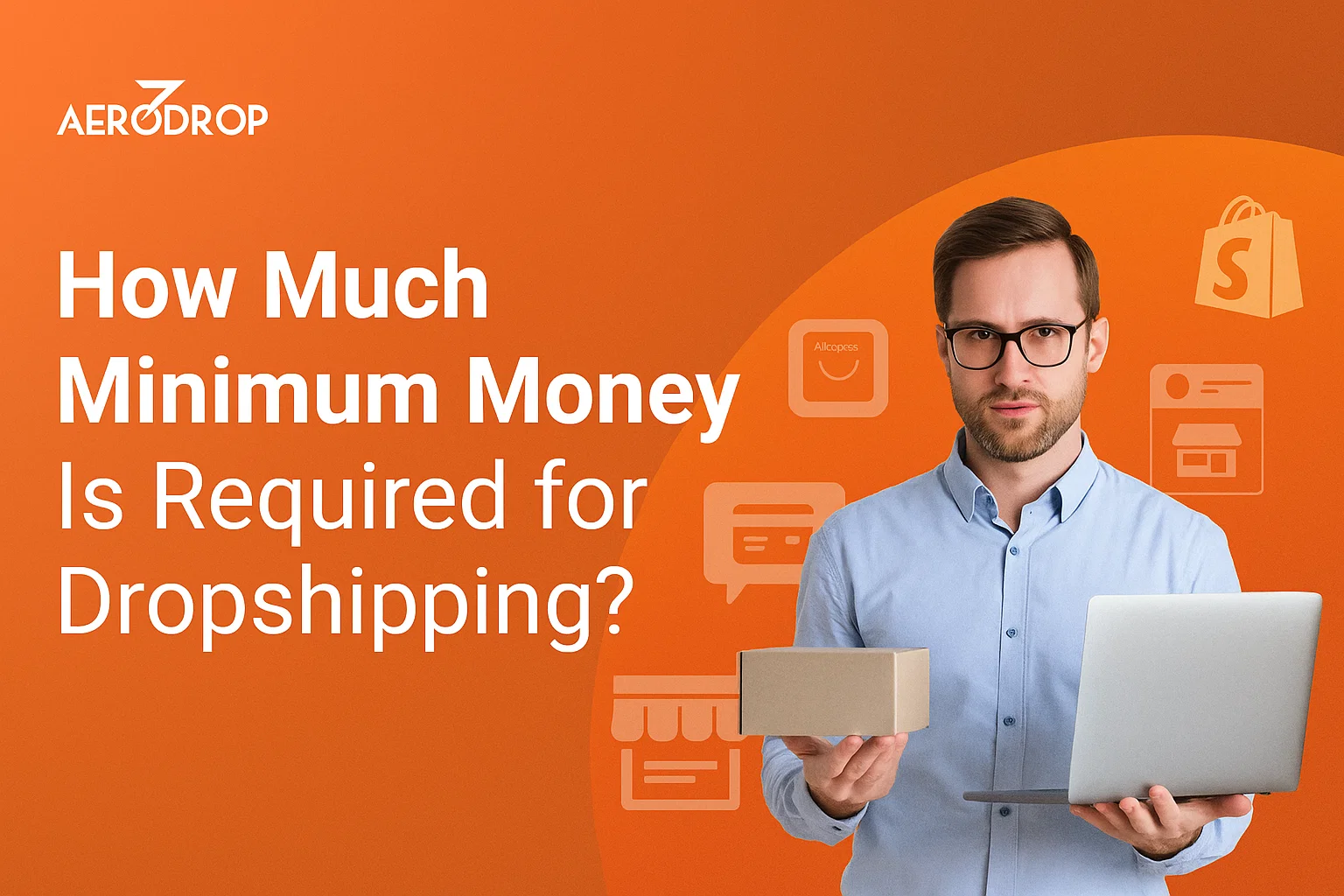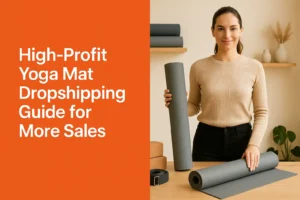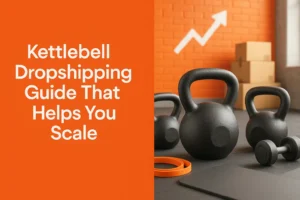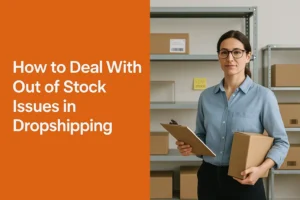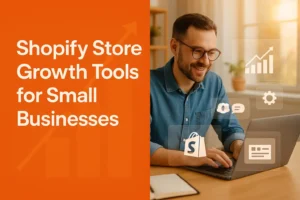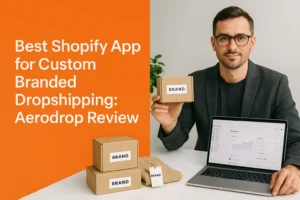How Much Minimum Money Is Required for Dropshipping?
If you’re considering starting a dropshipping business, the first thing you probably want to know is how much minimum money is required for dropshipping? One of the reasons this business model is so popular is that it removes the need to buy and store products upfront. This makes it accessible to beginners who want to start an online store without risking thousands of dollars.
The truth is, you can start dropshipping for much less than most people think, especially now that AeroDrop, a Shopify-integrated dropshipping platform, is completely free. In this guide, we’ll break down all the essential startup costs, how you can minimize them, and why using a tool like AeroDrop can cut your expenses to the bone while giving you a professional setup from day one.
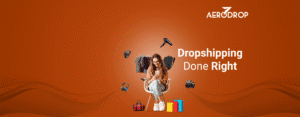
Understanding the Search Intent
The question “How much minimum money is required for dropshipping?” shows informational intent. People searching for this want a clear, practical answer about startup costs, plus actionable steps to get started. To fully satisfy that intent, this article covers:
- A realistic breakdown of essential expenses
- Where to spend and where to save
- How to launch with a budget of $200–$500
- Why AeroDrop’s free plan is a game-changer for beginners
The Bare Minimum Costs for Dropshipping
1. E-commerce Platform Subscription
The platform you choose is the backbone of your store. Shopify is the go-to for most dropshippers because it’s beginner-friendly and integrates seamlessly with tools like AeroDrop.
- Shopify Basic Plan: $39/month (often with a 3-day free trial and $1/month for the first 3 months in some regions).
- Alternatives: WooCommerce (free but requires hosting), Wix, BigCommerce.
Minimum Cost: $0–$39 upfront depending on trial offers.
2. Domain Name
A professional domain gives your store credibility and makes it easy for customers to remember you.
- Average cost: $10–$15/year from providers like Namecheap, GoDaddy, or directly via Shopify.
Minimum Cost: $10–$15 per year.
3. Product Sourcing
You don’t buy products upfront in dropshipping, but you still need a way to find and import them into your store.
- Manually browsing supplier sites: Free but time-consuming.
- Automation tools: Usually $19–$49/month.
- AeroDrop: Currently free — includes top-selling, handpicked products, one-click import to Shopify, and real-time shipping tracking.
Minimum Cost: $0 (if using AeroDrop while it’s free).
4. Marketing and Advertising
Marketing is usually the biggest cost when starting out. Without it, even the best store won’t get traffic.
- Facebook & Instagram Ads: Many start with $5–$20/day.
- Influencer shoutouts: $20–$200 depending on the niche and following size.
- Organic social media: Free but slower to gain traction.
Minimum Cost: $100–$200 to properly test ads.
5. Store Branding & Design
Your store’s look affects customer trust. You can start with free themes and upgrade later.
- Free Shopify themes: $0
- Premium themes: $50–$350 one-time
- Logo: Free with Canva or $5–$50 on Fiverr.
Minimum Cost: $0 if using free resources.
6. Optional Costs
- Business License: $50–$200 depending on your location.
- Apps & Plugins: Product reviews, upsells, and email automation ($0–$30/month).
- Custom Packaging: AeroDrop offers branded packaging when you’re ready to scale.
Example Minimum Budget for a Beginner
|
Expense |
Cost |
| Shopify Basic (1 month) |
$39 |
|
Domain |
$12 |
|
AeroDrop |
$0 (currently free) |
|
Marketing Budget |
$150 |
| Logo (optional) |
$0 |
|
Total |
$201 |
With AeroDrop free, you can realistically start a dropshipping business for just over $200.
How AeroDrop Cuts Your Startup Costs to Almost Zero
Most dropshipping beginners spend money on multiple apps for product research, importing, tracking, and order management. AeroDrop combines all of these into one free tool, saving you $20–$50/month.
Here’s what you get:
- One-click product import with ready-made titles, descriptions, and images.
- No minimum order quantity, so you can test products without financial risk.
- Real-time shipping and fulfillment tracking so customers stay informed.
- Custom branding and packaging to help your store stand out.
- Performance insights to identify winning products and scale profitably.
By using AeroDrop while it’s free, you remove one of the recurring costs that usually eats into a beginner’s budget.
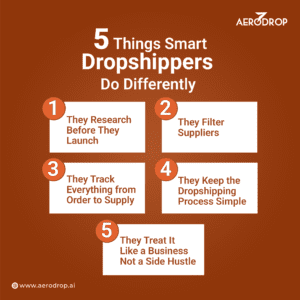
Tips to Start Dropshipping on a Small Budget
1. Use Free Trials Wisely
Sign up for platforms like Shopify and Canva during promotional periods so you get the most setup time before paying.
2. Start With a Focused Niche
Selling everything to everyone rarely works. Pick a niche and test 3–5 products to keep ad targeting and store design consistent.
3. Leverage Organic Marketing
Post regularly on TikTok, Instagram Reels, and Pinterest to get free exposure while running small paid ad tests.
4. Test Ads Before Scaling
Start with $5–$10/day per product. Once you see sales and positive ROI, increase the budget.
5. Automate With AeroDrop
Instead of juggling multiple tools, use AeroDrop to handle sourcing, importing, and fulfillment from a single dashboard.
Realistic Startup Scenarios
Scenario 1: Barebones Launch
- Shopify: $0 (trial period)
- Domain: $12
- AeroDrop: $0
- Marketing: $100 (organic + small ad test)
Total: $112
Scenario 2: Balanced Launch
- Shopify Basic: $39
- Domain: $12
- AeroDrop: $0
- Marketing: $200 (ads + influencer)
- Premium Logo: $20
Total: $271
Final Thoughts
So, how much minimum money is required for dropshipping? The answer is: you could start with as little as $100–$200 if you’re resourceful, but $200–$500 is a safer range that covers marketing, branding, and essential tools.
With AeroDrop currently free, you can slash one of the usual monthly expenses and put that money into getting customers instead. That’s a huge advantage for beginners who want to start lean but still look professional.
Start your dropshipping journey today with AeroDrop — it’s beginner-friendly, built for Shopify, and you can connect your store in just two clicks. Launch your store for almost zero software cost and focus on what matters most: making sales.

